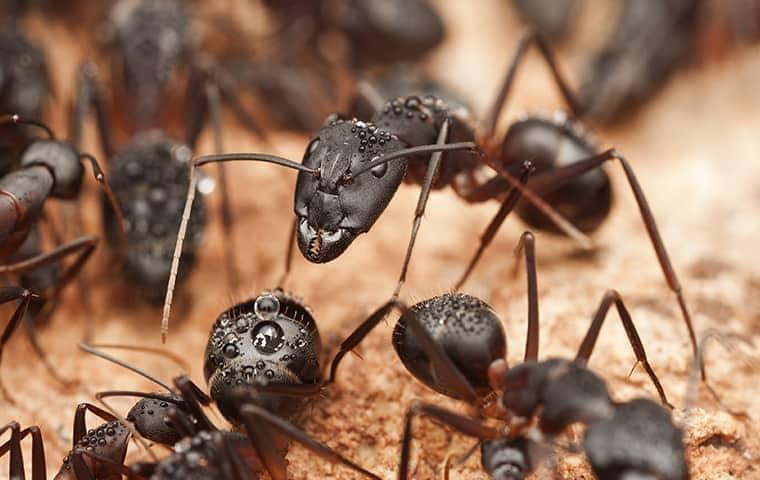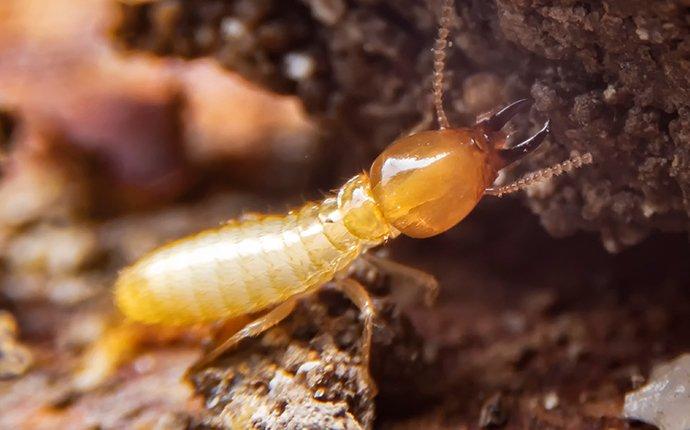Leading Ant Control Services: Trustworthy Solutions for Your Home or Business
Environmental Effect of Parasite Control: Harmonizing Efficiency With Sustainability
The ecological effect of insect control is a crucial concern that calls for a fragile balance in between attaining effectiveness in managing insects and making certain sustainability of our communities. From the usage of harmful chemicals that seep into our dirt and water to the unplanned effects on non-target varieties, the repercussions of traditional bug control techniques are significant.
Unsafe Chemicals in Parasite Control
The application of damaging chemicals in parasite control presents significant environmental and wellness risks that require cautious consideration and mitigation methods. Chemicals, herbicides, and insecticides are commonly used to eliminate insects, yet their prevalent application can cause unintended effects. These chemicals can pollute dirt, water sources, and the air, influencing not just the targeted pests however additionally advantageous bugs, wildlife, and human beings.

To address these dangers, integrated pest monitoring (IPM) methods are being promoted as a much more lasting option. IPM involves a combination of methods such as organic control, habitat adjustment, and the targeted use of chemicals as a last hope (ant control walkerton nc). By embracing an alternative approach to pest control, we can lessen the environmental and health and wellness impacts related to hazardous chemicals while efficiently managing pest populations
Influence On Non-Target Types
Thinking about the unexpected effects of insect control approaches, the influence on non-target species is an essential aspect that needs thorough examination. While pest control measures aim to target certain bugs, various other microorganisms in the community may be unintentionally impacted. Non-target types, including useful pests, birds, creatures, and also plants, can endure indirect or straight damage from pesticide applications or biological control techniques.
Pesticides can have lethal or sub-lethal impacts on non-target varieties. Pesticides developed to combat a specific insect pest may damage pollinators like or natural killers such as ladybugs. Additionally, chemical deposits can gather in the environment, impacting non-target microorganisms over time. In a similar way, biological control representatives, if not species-specific, can position dangers to unexpected targets, interrupting the ecological equilibrium.
To mitigate the effect on non-target species, incorporated insect administration (IPM) approaches that emphasize an alternative strategy to pest control are recommended. These methods prioritize using eco pleasant techniques, decreasing injury to valuable microorganisms while successfully handling pest populations. Performing extensive danger evaluations and checking the outcomes of insect control initiatives are necessary action in securing non-target varieties and advertising total community health.
Soil and Water Contamination
Unplanned environmental effects of parasite control methods prolong past influencing non-target varieties, with considerable implications for soil and water contamination - ant control services. Chemicals, herbicides, and chemical fertilizers utilized in pest control can seep into the soil and contaminate groundwater, posing a threat to both terrestrial and water environments.
Water contamination is another vital issue linked with parasite control methods. To mitigate dirt and water contamination from bug control activities, incorporated bug management methods that focus on sustainability and lessen chemical inputs are crucial.
Air Contamination From Chemical Use
Direct exposure to air-borne chemicals during farming applications positions a substantial issue for air pollution control steps. When pesticides are splashed onto plants, they can volatilize right into the air and type unpredictable organic compounds (VOCs) and various other airborne contaminants. These chemicals can contribute to the development of ground-level ozone, a major element of smog that can have detrimental impacts on human health, plant productivity, and overall air high quality. Additionally, pesticide my review here drift, where chemicals are lugged by the wind to unintentional areas, can bring about the contamination of neighboring ecological communities and water bodies.

Strategies for Sustainable Bug Control
In the world of farming techniques, applying sustainable insect control methods is paramount for keeping environmental equilibrium and protecting crop returns. Sustainable insect control emphasizes making use of environmentally friendly methods to take care of parasite populaces effectively while decreasing injury to non-target organisms and ecosystems. Integrated Parasite Management (IPM) is an extensively embraced strategy that incorporates organic, social, physical, and chemical control methods to attain long-lasting pest monitoring options.
Plant turning and diversification are likewise efficient strategies to disrupt pest life cycles and create much less favorable conditions for pests to thrive. Ultimately, by integrating these sustainable bug control techniques, farmers can attain an equilibrium between pest management effectiveness and ecological stewardship.
Final Thought
To conclude, the environmental impact of pest control approaches have to be carefully considered to balance efficiency with sustainability. Damaging chemicals made use of in insect control can result in soil and water contamination, air pollution, and injury non-target varieties - termite control. It is critical to carry out sustainable insect control approaches to decrease these unfavorable results on the setting and promote a much healthier community for future generations
By adopting an alternative technique to pest control, we can lessen the environmental and health impacts associated with damaging chemicals while successfully taking care of pest populaces.

To reduce the air pollution triggered by chemical usage, it is essential to embrace incorporated parasite administration methods that focus on the use of non-chemical bug control techniques, such as crop rotation, all-natural predators, and resistant plant varieties. Lasting parasite control highlights the use of environmentally pleasant approaches to handle pest populaces effectively while lessening injury to non-target microorganisms and ecological communities. Integrated Pest Administration (IPM) is an extensively taken on approach that integrates biological, social, physical, and chemical control methods to attain long-lasting insect monitoring options.